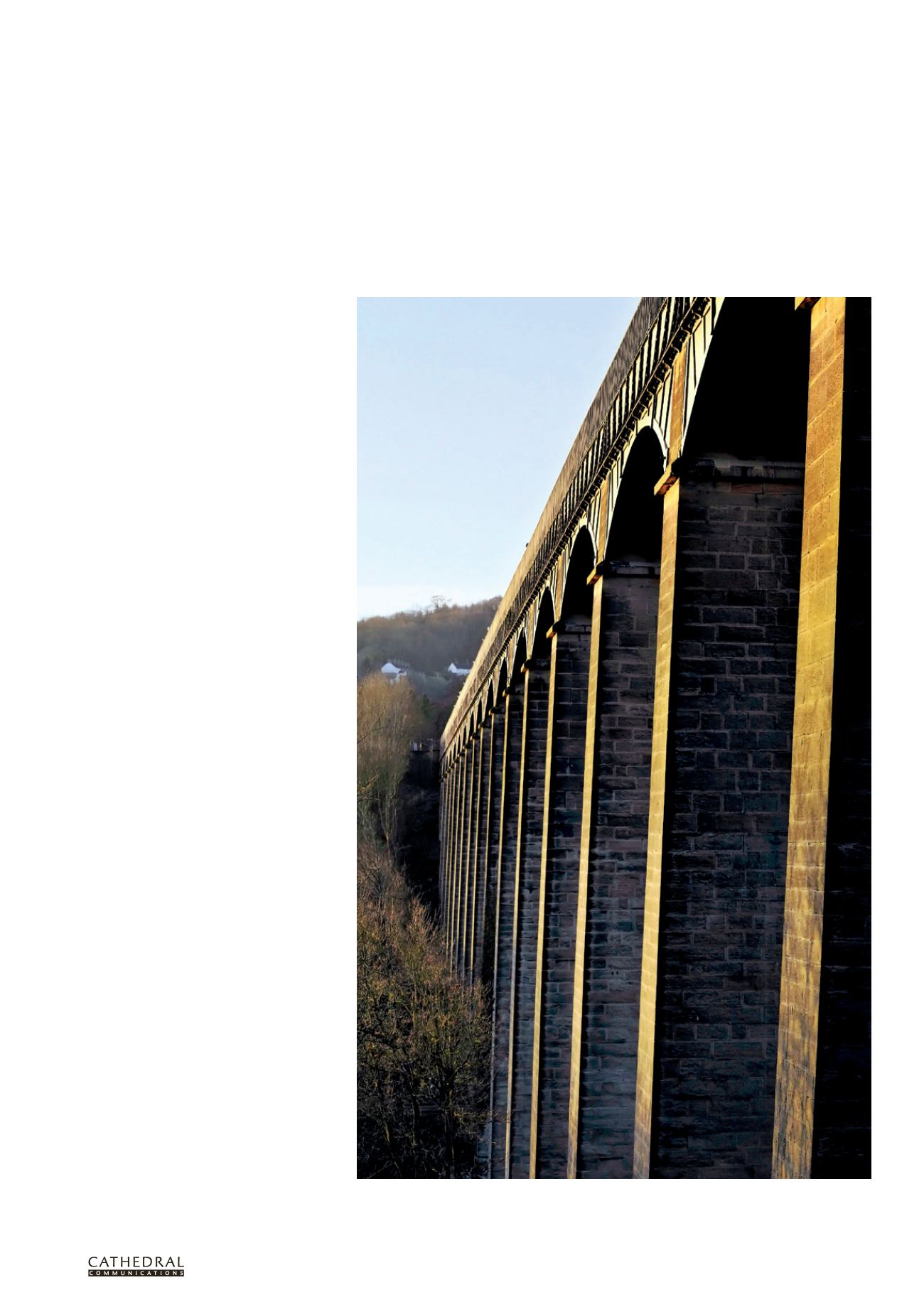
T W E N T Y F I R S T E D I T I O N
T H E B U I L D I N G C O N S E R VAT I O N D I R E C T O R Y 2 0 1 4
1 4 3
SERVICES & TREATMENT :
PROTEC TION & REMEDIAL TREATMENT
4.1
ADMIXTURES AND ADDITIVES
FOR LIME MORTARS
ROZ ARTIS
T
HE USE
of admixtures or additives that
can improve either the ‘plastic’ working
properties or the final performance
of mortars, renders and screeds has taken
place for over 2,000 years in the UK, thanks
to the Romans who brought with them their
sophisticated understanding of adding blood,
milk and fats to lime mortars. This knowledge
allowed them to build all manner of structures
and buildings, from using water-proofed
mortars for aqueducts and baths to making
self-levelling (lime) concrete screeds using
‘super plasticisers’.
The use of admixtures by our ancestors
was based on both practical experience
and observation not necessarily on an
understanding of chemical theory. However,
it is clear from his Ten Books on Architecture
that the Roman architect and engineer
Vitruvius understood the processing and
use of all manner of materials that went
into mortars, screeds and plasters including
admixtures or additives.
Thomas Telford, engineer extraordinaire,
used bull’s blood in the construction mortar
for building the Pontcysyllte Aqueduct
completed in 1805. The addition of blood
would have afforded some plasticising or water
repelling properties, eminently sensible on
an unprotected structure with weathering on
all sides of the pillars. I have this awful vision
of the site with vats of warm, dark red blood
being poured into mortar!
Now much of this knowledge has been
all but lost, at least as far as lime mortars are
concerned. However, additives for cement
mortars and cement-bound concrete have
been developed in the 20th century which
were based on past traditions of using
proteins and natural sugars, albeit in more
user friendly forms. On the other hand
some materials that have been developed
for cement bound mortars and concrete
are totally unsuitable for using with lime
mortars, such as the calcium chlorides
used as accelerators to increase strength
development and early resistance to frost.
Today, many (by no means all)
conservationists often shun the idea of
‘polluting’ lime mortars with admixtures and
additives without even stopping to think.
Additives and admixtures of the right types
can be used very effectively in new lime
mortars (and remember all work is new work
anyway) and are being developed into much
more user friendly forms. These materials can
promote earlier freeze-thaw resistance, repel
water droplets, allow mortars to cure more
slowly, make mortars and plasters much more
Pontcysyllte Aqueduct: the bulls’ blood admixture specified by Thomas Telford would have had some
plasticising and water-repelling properties (Photo: ©iStock.com/AlasdairJames)


